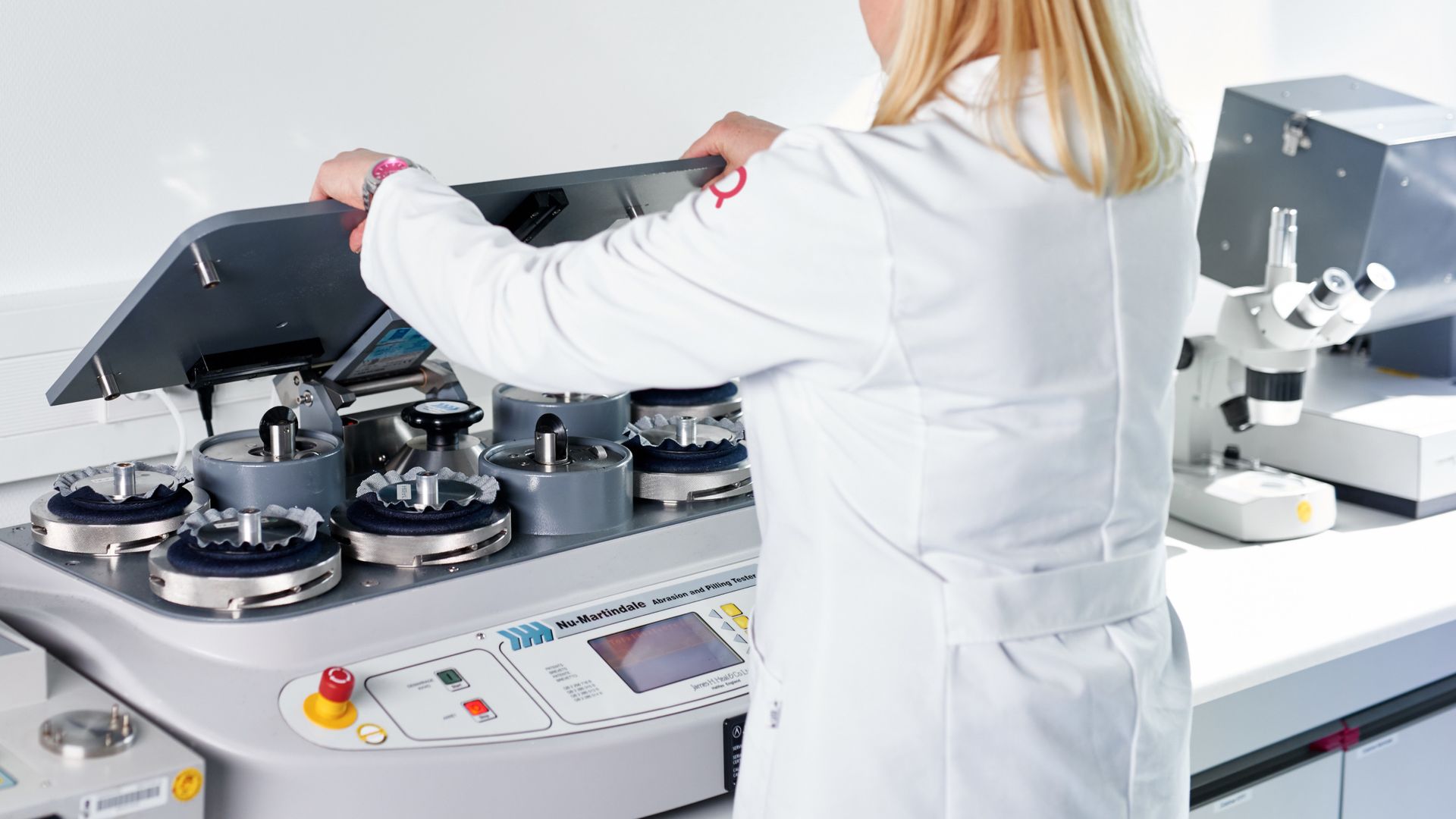

The science behind the dyeing of textiles will continue to become more and more complex, as long as new natural and synthetic dyes are being discovered and created. Dyeing methods are also evolving, whether for reasons of enhancing product quality, reducing production costs, or simply to produce as many articles as possible.
How well a textile retains its color is known as color fastness. This property can be measured against a variety of elements, such as sunlight exposure, crocking (abrasion), perspiration, machine washing, bleach, phenolic acid, and burnt gas fumes.
For the purposes of manufacturers whose end-product will eventually face one or more of these elements, it’s good to know that the science of textile testing for color fastness has grown quite sophisticated as well.
The ability of a fabric to resist fading or running after being subjected to the elements is determined by simple grading on a scale of 1 to 5, with 5 indicating the highest quality and 1, the lowest. This grading system is uniform for all textile products, regardless of the specific color fastness criteria they are measured against.
In practice, however, you will be hard pressed to find this grade on the labels of most products, such as clothing, bedsheets or upholstery. Instead, phrases like “wash with like colors” are used as a way of saying “less than optimal wash color fastness.”
By contacting QIMA you agree to our privacy policy and terms and conditions.
Modern production methods, which often work to satisfy global demand, rarely can accommodate the idealistic pursuits of “small batch” production. The use of all natural fibers and pigments under time-intensive craftsmanship tends to be impractical or prohibitively expensive for both producers and consumers.
Still, that does not mean that factory production should automatically be equated with “cheap”, “disposable” or “environmentally negligent.” The right balance of responsibly sourced quality fabrics and dyes, combined with appropriate production and dyeing methods, can really set your brand apart in the growing crowd of indifferent companies churning out poorly made merchandise.
A comprehensive textile lab testing and factory inspection service can help your company maintain that balance by assisting with the development of efficient, eco-friendly designs and manufacturing schemes. Beyond that, a reliable testing and quality control partner will help you determine and implement the right combination of valid testing methods specific to the end use of your textile product.
In terms of color fastness testing, a variety of different national and international standards may apply to your product, including:
Color Fastness to Washing (ISO 105 C06) -- Even though manufacturers may use chemicals that help fabrics resist color running in the short term, tests like ISO 105 C06 use procedures meant to simulate repeated hand or machine washing over long periods of use.
Color Fastness to Light (ISO 105 B02) -- Ideal for products like window curtains and summer clothing, the ISO 105 B02 test exposes the fabric to a xenon lamp meant to replicate UV rays and fluorescent lighting.
Color Fastness to Phenolic Yellowing (ISO 105 X18) -- Although fabrics may turn yellow under a variety of circumstances, one of the most frequent culprits is the plastic packaging in which the fabric is stored. Phenolic acid is commonly used in industrial plastics and can sully material when exposed to oxygen.
Color Fastness to Rubbing (ISO 105 X12) -- This part of ISO 105 specifies a method for determining the resistance of the color of textiles of all kinds, including textile floor coverings and other pile fabrics, to rubbing off and staining other materials. The method is applicable to textiles made from all kinds of fibers in the form of yarn or fabric, whether dyed or printed. Two tests may be carried out, one with a dry rubbing cloth and one with a wet rubbing cloth.
QIMA's comprehensive lab testing and inspection services stay on top of all testing requirements and industry-led standards, helping you to secure your production and stay compliant with relevant standards. Fast global coverage, daily inspection reports and easy online access to test results will give your company the edge it needs to ensure not only the quality of your products, but the integrity of your entire brand.
Our online platform and mobile application make it easy for you to schedule Textiles tests and inspections, and receive your results at any time. Book new tests, view pending orders, and access results from your mobile device. Our online platform provides valuable supply chain insights, including a summary of your QC activity, all of your supplier’s quality stats, industry benchmarking data, and more.
Get Started: Login or create your account
By contacting QIMA you agree to our privacy policy and terms and conditions.